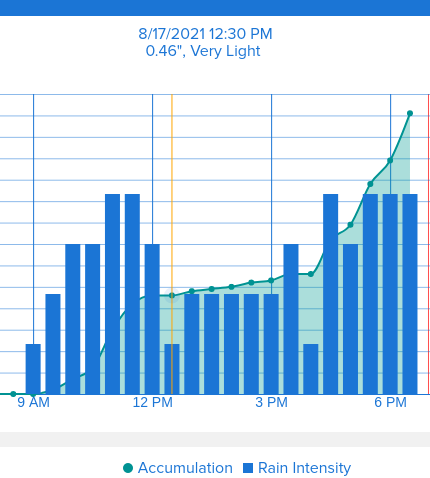So I just finished up my rather over-the-top setup, and figured I’d share.
I have ~20 trees and I decided to put an underground irrigation system where each tree has it’s own zone. 24 valves at the moment using OpenSprinkler. I wanted the system to be fully automated and account for rainfall. I use Raspberry Pis for many projects, so my plan was to get a rain gauge and wire it to the Pi, track the rain and inject that into a formula for watering the trees.
Then I discovered WeeWx…
Since I was already doing to bucket, and WeeWX offers a much more elegant way of monitoring and databasing weather data, I decided to get a weather station in addition to the rain gauge. The best rain gauge I could find is the RainWise RAINEW 111 8" tipping bucket. I decided on the Ecowitt (available in the US under Ambient Weather) WS80 weather station because it has no moving parts. This uses a GW1100 Weather-station-to-WIFI gateway which WeeWX has a driver to poll every 20 seconds.
WeeWX also offers an MQTT integration, so my home automation can tie into anything reported by the station (e.g., turn off the exterior lights is solar radiation > xx, stop watering if currently raining, close the garage door if winds > xx mph for xx minutes, you get the idea).
I had to write my own service for WeeWX to integrate the wired rain gauge, but I have a hobbyist background in Python so it wasn’t too difficult. The WeeWX developers are active and helpful.
Then I discovered the Belchertown skin for WeeWX… and since I already have my own webserver…
So now I have the weather station up and running. The whole setup is powered by a 20w solar panel and 18Ah LiFePO4 battery, though I may need to boost that, we’ll see.
You can see the output here: https://wx.sethratner.com
With the MQTT integration the webpage grabs updates from the weather station every 20 seconds. WeeWX logs the conditions into the database every 5 minutes for analytics, graphing, and in my case, modifying watering schedules based on temps, solar radiation levels, and rainfall amounts. New “reports” are generated every 15 minutes, but all these timings are customizable. And it all runs on a $10 Raspberry Pi.
Finished Setup
Black Box open showing Raspberry Pi and Stepping Voltage Converter (7.5vdc) for the Open Sprinkler
Battery wired in a cheap ammo can from Wal-Mart, wired with a cigarette lighter plug
The WS-80. The wire is for a heater in icy weather. I will mount it at 15’ eventually
My next chore is writing the actual program and associated algorithms to water the trees. It’ll use the WeeWX database and send commands to the OpenSprinkler using http. That’s not needed till Spring though.
I’d be happy to help anyone who wants to make a similar setup, though the more different you make it from my system, the more comfortable you’ll need to be with Python, Linux, soldering, and webhosting.







